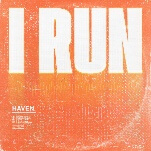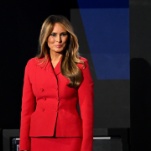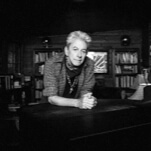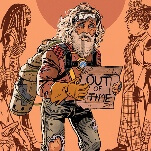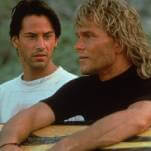The Spice Girls were as much merchandising scheme as girl group

In the mid-’90s, a force rose from the ruins of the British empire. This force would go on to assume a role of global significance, influencing people around the world and definitively altering the course of world history. I refer, of course, to Tony Blair. But also, the Spice Girls existed back then, and when they released their first major label single, “Wannabe,” in 1996, the group quickly became a massive international success story. Almost as massive as the amount of products and merchandise licensed under their name and likenesses.
The Spice Girls were never meant to be just another pop group. They were conceived from the beginning as a marketing tool, a multi-headed hydra of corporate synergy and focus-tested feminine appeal. It was a right-place, right-time atom bomb of nonstop product placement and capitalist exploitation, delivered in a slick package of glossy pop ditties and smiling faces. (Extremely non-threatening faces, of course.) Ironically, the very idea of “girl power” appropriated by those charged with crafting and selling a quintet of hyper-sexualized women ended up having real effects on a generation of young fans who ingested the message of empowerment while casting aside the embarrassing cheesecake-pinup that constituted the group’s visual style. For these young people, hearing feisty ladies exhorting them to place friendship above romance, being their best selves, and not letting anyone get them down was a legitimately inspiring message.
There were also those who simply enjoyed the over-the-top absurdity of it all. Oh, the absurdity. From the start, Spice Girls felt like an act out of time, running smack into the middle of the alternative-music renaissance—and probably helping the genre meet its death the very same year. The video for “Wannabe” was an outlier on MTV, playing in between Bush and Green Day, as though a sleepy programmer had accidentally pulled something from the 1986 video vault instead. It looked garish, and sounded more so; but, like the Black-Eyed Peas a decade later, the earworm nature of the hook was undeniable, like someone had set out to write both the best and worst pop song at the same time. It was ridiculous, and infectious, and from the strength of that debut, the group went on to sell more than 80 millions records worldwide—not to mention far more in related merch.
The message always seemed muddled if you gave it more than a passing glance. Forget that the “Wannabe” video literally starts with Baby Spice (Emma Bunton) stealing a winter hat from a homeless person, like some sort of reverse Mother Theresa. The songs about not caring what anyone thought explicitly catered to a gaze that viewed them through a continual lens of sexualized fantasy. Spice Girls had something for every fetish: There was the sexy tomboy (Melanie Chisholm, a.k.a. Sporty Spice, a.k.a the one who could actually sing); the worrying sexy babydoll woman (Emma B., a.k.a. Baby Spice); the nothing-but-sex sexy one (Geri Halliwell, a.k.a. Ginger Spice, so named because it was determined the original moniker of “Sexy Spice” wouldn’t go over so well with parents curious what their daughters were obsessed with); the sexy chic austere model one (Victoria Beckham, née Adams, a.k.a. Posh Spice); and the sexy fierce one (Melanie B, a.k.a. Scary Spice, about whom the less said regarding the racist connotations of her moniker and individualized marketing within the group, the better).
Contrary to the prepackaged image, the Spice Girls always had more control over the group than it might seem. Despite being put together by a talent agency intent on creating the next big girl group, when the women learned they were meant to dress identically and sing cover songs, they split, and developed their own set of songs and dance routines, along with the looks that characterized each one. After signing with music svengali and professional hairdo Simon Fuller (creator of the American Idol franchise), the Spice Girls got a new name, a new set of songs, and nicknames given to them by a journalist who—according to Mel B—couldn’t remember their names.
Once the gravy train of musical success began rolling, the other aspects of marketing took center stage, until it was more of a runaway freight hurtling down the side of a mountain made of cheap plastic accouterments licensed to be emblazoned with their faces. Spice Girls products became ubiquitous. You couldn’t walk into a Walgreen’s, much less a Toys R’ Us or Nordstrom, without seeing Spice Girls. There were the obvious brand extensions, like makeup, clothing, Trapper Keepers—all the usual suspects for targeting a pre-teen female demographic.








